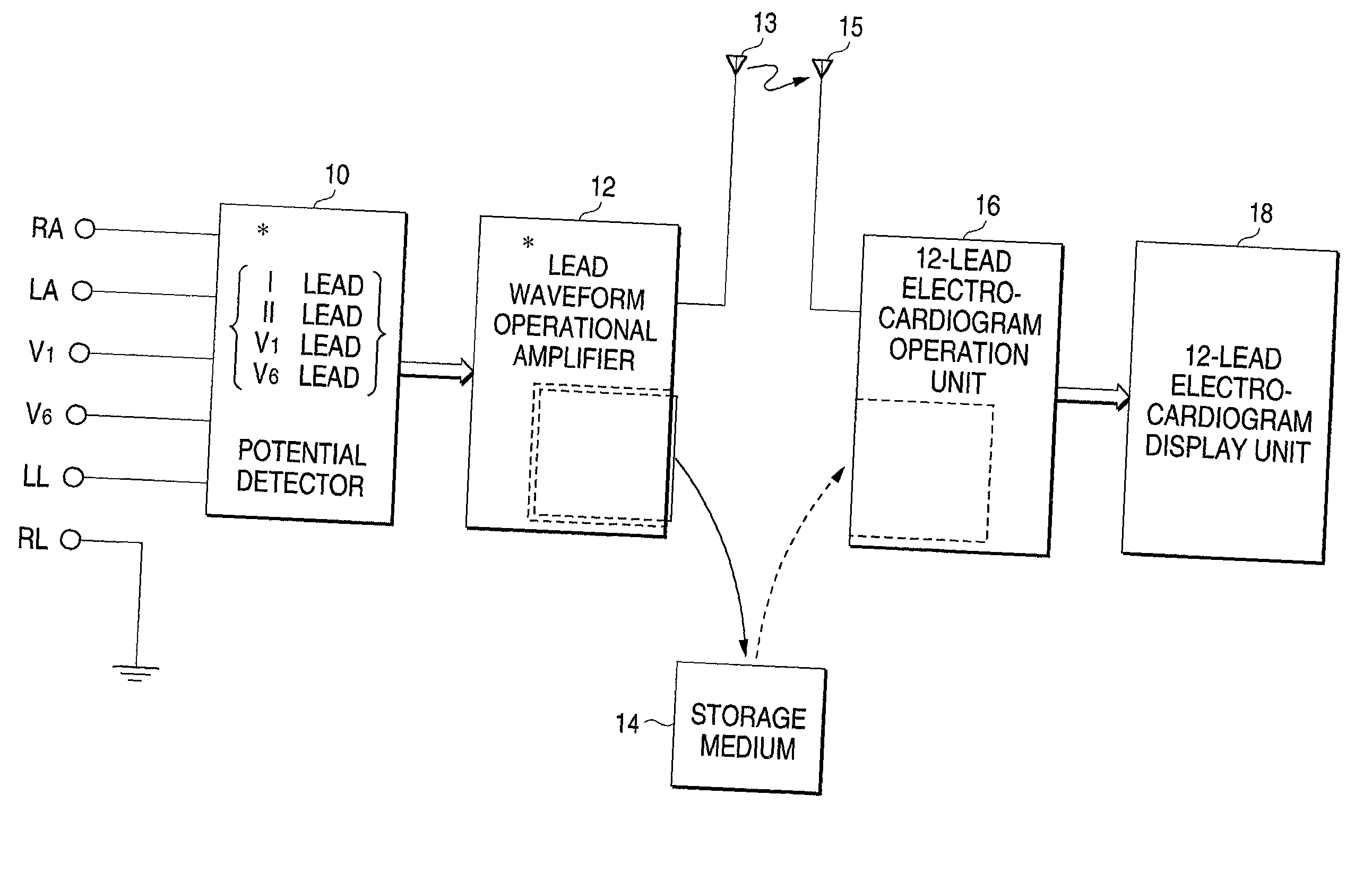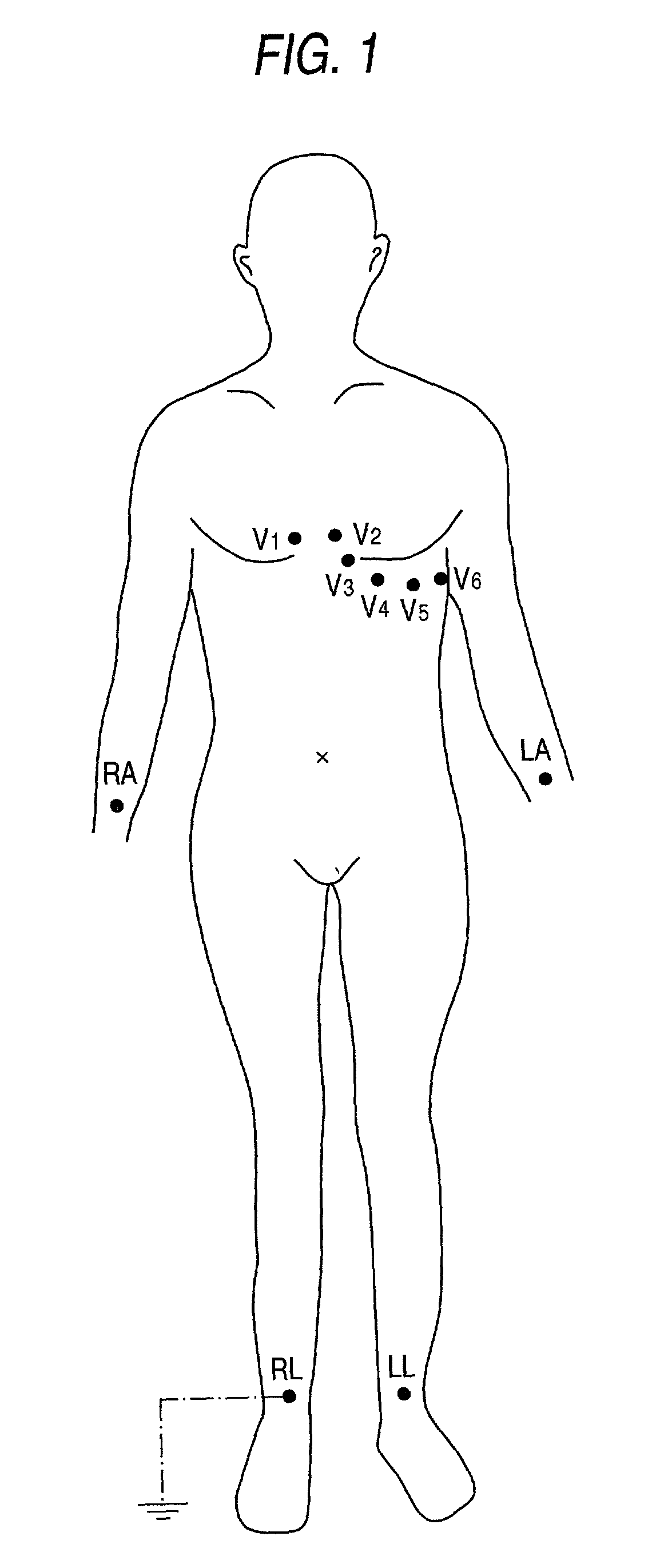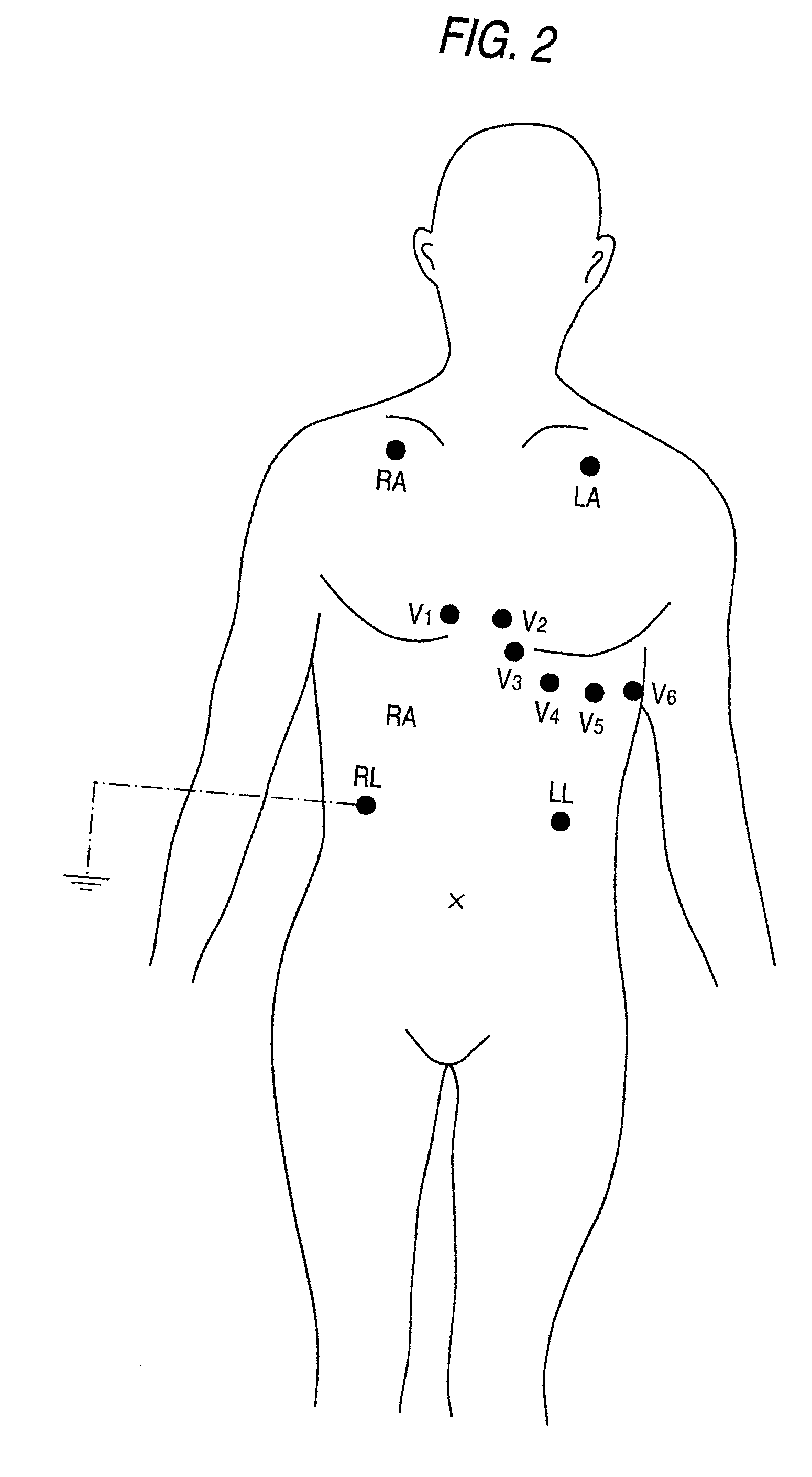Method of deriving standard 12-lead electrocardiogram and electrocardiogram monitoring apparatus
a monitoring apparatus and electrocardiogram technology, applied in the field of deriving standard 12-lead electrocardiogram and electrocardiogram monitoring apparatus, can solve the problems of difficult long-term bedside monitoring, difficult to record such ten electrodes, and inability to monitor long-term, etc., to improve diagnosis accuracy.
- Summary
- Abstract
- Description
- Claims
- Application Information
AI Technical Summary
Benefits of technology
Problems solved by technology
Method used
Image
Examples
Embodiment Construction
[0021] Principle of Present Invention
[0022] The principle of the present invention is based on the fact that there is information redundancy in the standard 12-lead electrocardiogram. In most electrocardiogram machines, signals of eight leads (I, II, V1 through V6) are recorded. These signals are not completely independent. According to the fixed dipole model of the heart, which interprets the electrocardiogram in a good precision, there are only three independent variables, so that it is possible to record electrocardiogram signals with a portion of the standard leads and to derive electrocardiogram for other leads. In this way, the 12-lead electrocardiogram provides raw signals with the recording leads as primary information and provides secondary information with derived leads as reference in improving accuracy of diagnosis.
[0023] Specifically, the subset of the lead system using a least number of channels includes the leads I and II of the limb leads for the standard 12-lead ele...
PUM
 Login to View More
Login to View More Abstract
Description
Claims
Application Information
 Login to View More
Login to View More - R&D
- Intellectual Property
- Life Sciences
- Materials
- Tech Scout
- Unparalleled Data Quality
- Higher Quality Content
- 60% Fewer Hallucinations
Browse by: Latest US Patents, China's latest patents, Technical Efficacy Thesaurus, Application Domain, Technology Topic, Popular Technical Reports.
© 2025 PatSnap. All rights reserved.Legal|Privacy policy|Modern Slavery Act Transparency Statement|Sitemap|About US| Contact US: help@patsnap.com



